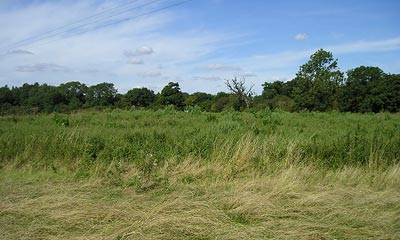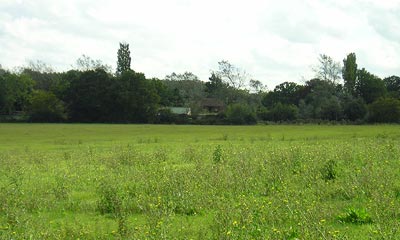It’s all very well wanting to protect the Green Belt, but just what is it and has it outlived it’s purpose anyway?
It’s hard to escape talk of the housing crisis these days. Whether it’s Government or opposition MP’s engaging in the usual Punch-and-Judy style of claim and counter-claim, or the frenzied media coverage constantly debating the subject, there is no doubt that solving the housing crisis will not be quick or easy for this or any other government. The good thing is that something is at last being done.
Of course, solving the housing crisis can hardly be mentioned in the same breath without the issue of where these houses should be built rearing its head, and this is one of the central headaches occupying the minds in Whitehall. Since the publication of the Barker Report more than a year ago, the rate of house building in this country has been slowly ramping up. And you can’t talk about where to build houses without the whole issue of the Green Belt and it’s role in planning policy being brought up.

Let it be said that I fully support the spirit of the CPRE, or Campaign for the Protection of Rural England. I think that it is necessary to preserve our “green and pleasant land” for future generations, from a social, economic and environmental viewpoint. I don’t think any of us would like to live in a country without protections for the countryside such as the Green Belt – we are, after all, a small country with a limited supply of land and a large population in relation to our land mass. Specifically, the Green Belt has the following purposes, as stated in Planning Policy Guidance Note 2:
- To check the unrestricted sprawl of built-up areas;
- To safeguard the surrounding countryside from further encroachment;
- To prevent neighbouring towns from merging into one another;
- To preserve the special character of historic towns;
- To assist in urban regeneration.
This all sounds very noble in theory, however I would question which of these purposes the Green Belt is currently fulfilling. It does not seem to be restricting the large-scale expansion of towns and the creation of entirely new ones – one only needs to look at the thousands of homes the Government will build over the next decade in areas such as the Stansted-Cambridge Corridor or around Ashford in Kent. So, by implication, given that many of these new homes are being built on Green Belt land, the surrounding countryside is not being protected from further encroachment. Likewise, the idea of the Green Belt assisting urban regeneration seems a little far fetched to me, given the vast tracts of derelict land that permeate our towns and cities.
I think that the CPRE and other like-minded organisations and individuals need to wake up to the reality of what much of the Green Belt today actually is – it’s literally a waste of space, and is preventing the younger generations from purchasing a home. I don’t mean that attractive countryside, rolling fields or ancient woodlands are a waste of space, but rather that there are massive areas of Green Belt that are actually derelict, barren and unattractive wasteland more reminiscent of the aftermath of a nuclear winter than the cherished haven for wildlife and nature those blindly campaigning for the protection of all areas of Green Belt purport them to be.
I myself have visited several such Green Belt sites. Take, for example, Green Belt land close to the City of St Albans in Hertfordshire. I visited the land with a salesman from a local land agency, as I was considering purchasing a plot of land from that company for investment purposes. As we approached the land, which was fronted by tall trees, I had the initial impression that I was in rich countryside, even though the site was actually very close to local housing. When we entered the site itself, I was immediately struck by the contrast in the appearance of the land – it didn’t look like lush countryside, but almost like land that had been developed before. The ground was hard, in many areas devoid of vegetation, and to be honest, rather unattractive. It was also a sizeable site, being many acres in size. I seem to remember that it was flanked on both sides by houses and other buildings as well. I couldn’t help but be stuck by the obviousness of the situation – the land would be far better used to provide affordable housing for a city where the average price of a two-bedroomed flat was spiralling towards £300,000.

The Government has been criticised for fiddling the figures on the Green Belt almost since they came to power. The other major political parties argue that the Government is removing some areas from the Green Belt that are close to existing residential housing developments and simply incorporating the same or a larger area of land into the Green Belt that is somewhere in the open countryside, land which doesn’t need protection anyway because no local planning authority in their right mind would approve a request for planning permission.
But surely this is what should happen? Shouldn’t we protect the Green Belt’s original purpose - to stop towns and cities merging into one another in one huge nationwide urban sprawl - and convert the decrepit, uncared for mess that comprises much of our urban Green Belt into affordable, energy-efficient, sustainable developments? I think we need to abandon the idea of a static, fixed Green Belt in favour of something that can move with the times a bit more effectively and safeguard the valuable parts of our rural heritage. Rather than be constrained into pointlessly protecting prime re-development land from building, we need to look long and hard at what the country needs both from its housing policy and its environmental policy. Areas of green space in areas unsuitable for building, rejuvenated countryside and so-called “Green Lungs” in cities would all help to ensure the sustainable nature of green spaces and allow us build where we need to and where people want to live.
Like I said at the beginning of this article, this kind of problem is never easy to solve and probably doesn’t have a perfect solution in the long term – if we want more houses and all the infrastructure development that accompanies it, then we will have to make some tough choices about what is more important – a failed and outdated concept like the Green Belt, or a new policy of getting rejuvenated green spaces into the areas that need them the most.
by Steve Merchant
UK Land Directory Comment - Jan 06
Submit your article to UK Land Directory
If you want your article to be published on UK Land Directory, please email us at info@uklanddirectory.org.uk. We will include your article if it meets our editorial guidelines.
Other Comments
- Green Belt under threat from housing plans - Sep 06
- Investing in Land - Aug 06
- Good Bye John... - Jun 06
- Land Gets The Smart Investor's Vote - May 06
- Land with Significant Strategic Development Potential in West London - Apr 06
- Garden grabbing developers - Mar 06
- A different breed of land agents. - Feb 06
- It's all very well wanting to protect the Green Belt, but just what is it and has it outlived it's purpose anyway? - Jan 06
- Investment in Land - An Opinion - Dec 05
- "For the sake of today's ten-year-olds we need to start planning new homes now." - Nov 05
- For Sale - Strategically located land identified by Taylor Woodrow PLC - Oct 05
- Building on greenbelt - never believe when they say never! - Aug 05
- Never say it won't be built on Greenfield or greenbelt - Jul 05
- Are all the new homes required? - Jun 05
